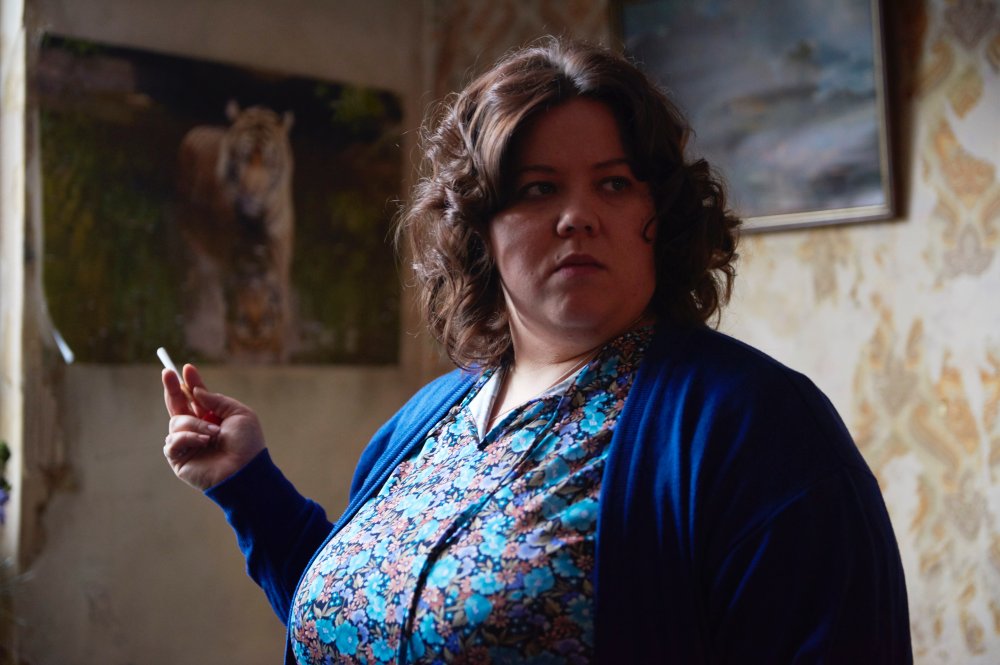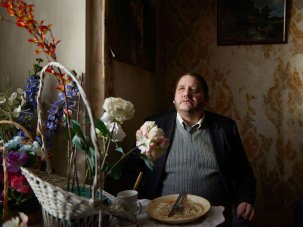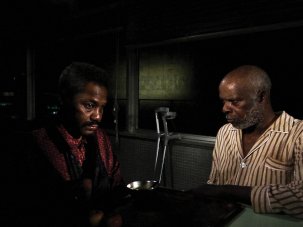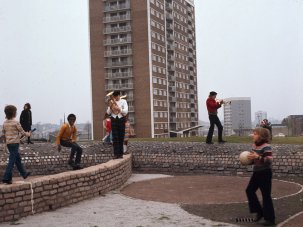In the mid-1990s the artist Richard Billingham made a name for himself with a book of photographs depicting the lives of his parents and brother in a West Midlands tower block. The book was called Ray’s a Laugh and was an attempt to reckon with the impoverishment of his upbringing and the tragedy of lives lived on the hardscrabble margins of Thatcher-era Britain. Billingham has returned to the subject numerous times since, but it is the spaces between the shutter clicks of Ray’s a Laugh that his feature debut, Ray & Liz, inhabits. Shot on grainy 16mm stock and in boxy Academy ratio by Under the Skin cinematographer Daniel Landin, the film acts like a reworking of the static images – but this is no retread of old ground; it is a deeper and more enriching exploration of the people, their circumstance and Billingham’s own relationship to both.
UK 2018
Certificate 15 108m 19s approx
Director Richard Billingham
Cast
Ray Justin Salinger
Liz Ella Smith
Older Ray Patrick Romer
Older Liz Deirdre Kelly
Lol Tony Way
[1.33:1]
UK release date 8 March 2019
Distributor New Wave Films
newwavefilms.co.uk
► Trailer
In The Road to Wigan Pier (1937), George Orwell opined that the working-class man “does not act, he is acted upon”. The passivity of poverty refracts through the protagonists in each chapter of this fragmentary triptych; they are buffeted by prevailing winds and the action – or inaction – of others. A framing device depicts an older Ray (Patrick Romer) subsisting in a council-flat bedroom, mostly lying on the bed, levering himself upright only to smoke or drink homebrew delivered by his neighbour. The neighbour also takes care of his bills and poll-tax payments (placing the action at a date that belies Ray’s decrepit appearance). The action returns to Romer’s Ray in the room three times. These reflective scenes portray a man broken by penury, relinquishing the measly remainder of his benefits to his estranged wife Liz, who is pointedly played in this older incarnation by Deirdre Kelly, aka White Dee from the Channel 4 programme Benefits Street.
In the first of two lengthy flashbacks (in which the younger Ray is played by Justin Salinger), Ray’s brother Lol (Tony Way), who has learning difficulties, is unable to stop himself being bullied and taken advantage of, first by Liz (Ella Smith) and then by their borderline sociopathic lodger Will (Sam Gittins). In the second flashback, Ray and Liz’s youngest son Jason (Joshua Millard-Lloyd) drifts largely unnoticed in and out of the tiny council flat they’ve been moved to. One night he almost suffers hypothermia when he sleeps in a shed because he can’t find his way home in the dark. He nods compliantly when subsequently told that he’s going to be taken away from his parents and placed in foster care.
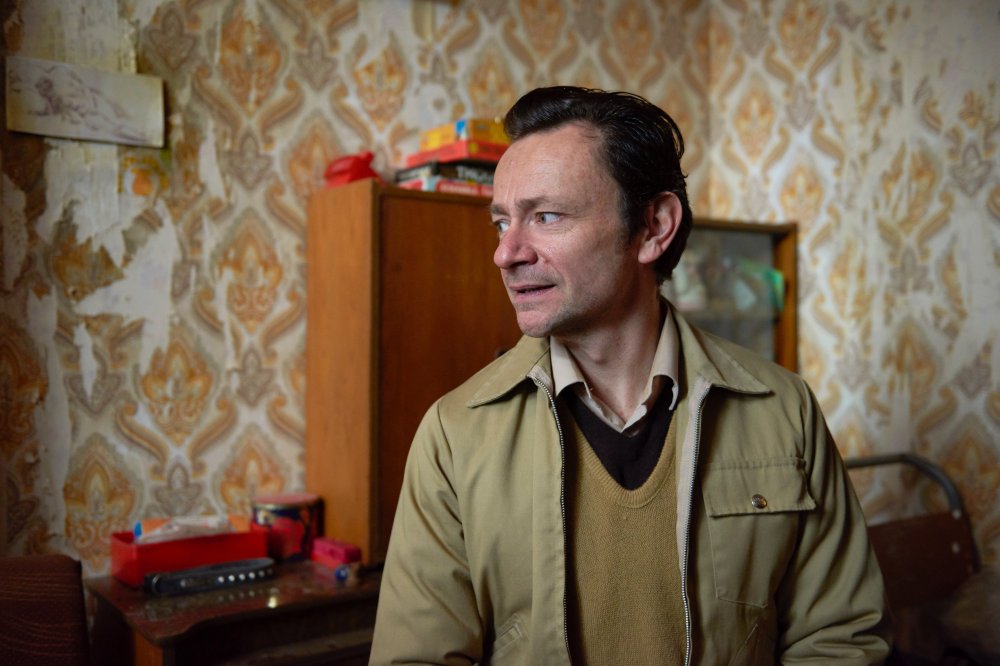
Justin Salinger as Ray
Both of these flashback scenes are difficult to watch, as “soft” Lol is treated viciously by the other members of the household and then Jason suffers an equally damaging form of neglect. They feel somewhat disconnected, suggesting two specific moments of exorcism for Billingham, who appears on the fringes of both (played by Jacob Tuton, aged ten, and Sam Plant, 16). However, there are subtle throughlines that connect these distinct episodes and create a layered study of the family and its situation.
Although they are the title characters, Ray and Liz are largely absent from the flashbacks. For both Lol and Jason, their absence and, again, passivity (and, to a small extent, Richard’s) have dire consequences. That said, both characters still have arcs to be found on the periphery. The word depression is never uttered, but it is hard to shake the sense of both of Billingham’s parents succumbing to it over time. Smith plays Liz as a fierce and foul-mouthed matriarch, but over the course of the two flashbacks she is consumed by sadness, ending both sections in genuine tears of grief.
Ray seems to physically recline as time wears on. He ends up essentially bedridden, as his world closes in on him, from terraced house to council flat, to single bedroom. A recurring motif of confined animals – pet budgie, rabbit and dog, snails kept in an ice-cream tub, a giraffe at the zoo – suggests the inescapability of the situation and partly diagnoses the apathetic malaise afflicting Ray (and others with his condition).
For all that Ray & Liz has contemporary relevance – from the casting of White Dee and depictions of exclusion to pointed references to Nazis and the consequences of Conservative policies – it is a deeply personal work. These are hard scenes to watch, but they also brim with emotive detail and, on occasion, humour: this is less a film angry at neglect by Ray and Liz as one that’s trying to understand them amid their neglect by society.
In the April 2019 issue of Sight & Sound
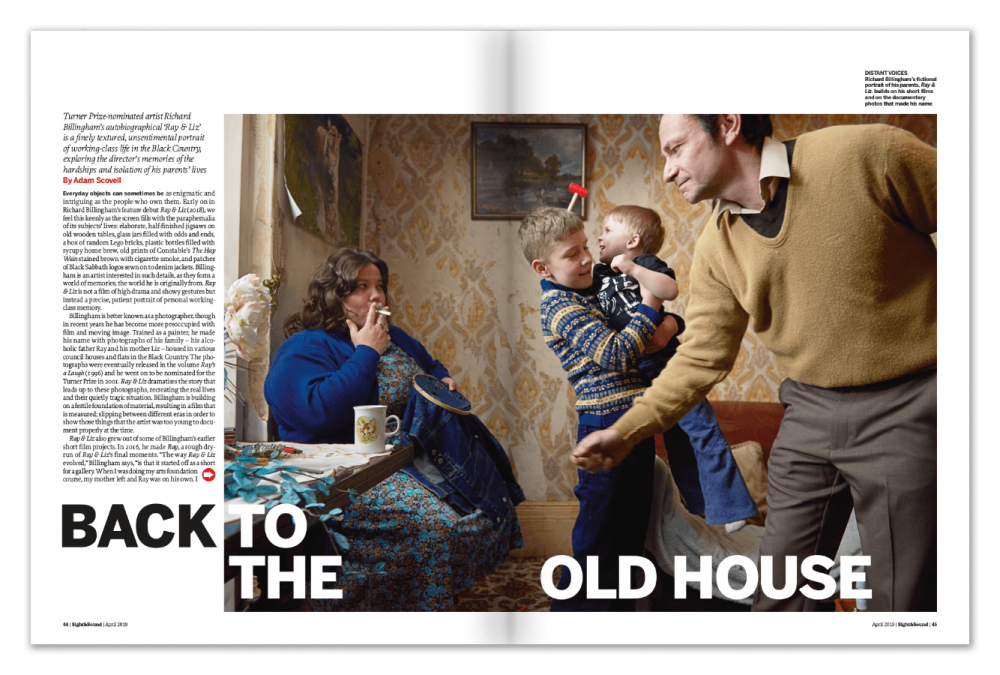
Back to the old house
Turner Prize-nominated artist Richard Billingham’s autobiographical Ray & Liz is a finely textured, unsentimental portrait of working-class life in the Black Country, exploring the director’s memories of the hardships and isolation of his parents’ lives. By Adam Scovell.
-
Sight & Sound: the April 2019 issue
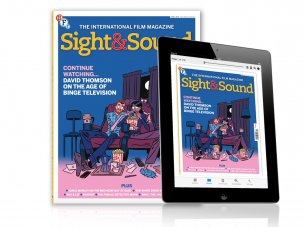
In praise of binge TV, plus Border, The White Crow, Ray & Liz, Out of Blue and female noir.
-
The Digital Edition and Archive quick link
Log in here to your digital edition and archive subscription, take a look at the packages on offer and buy a subscription.




